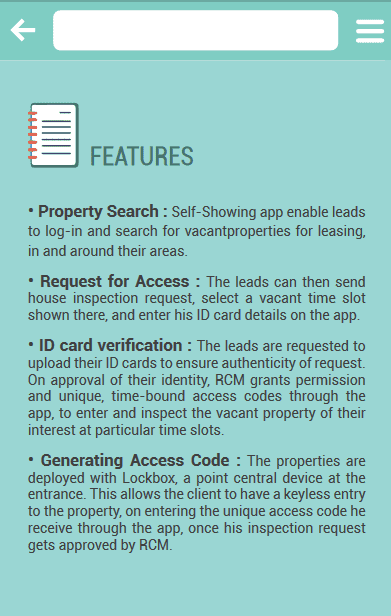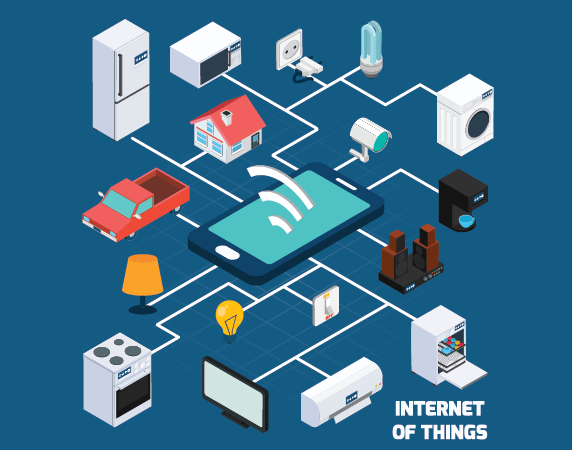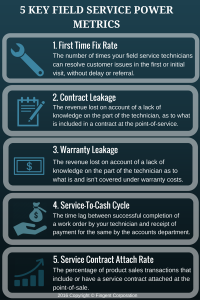Category: Field Service
Call it the innovation driver or the disruptive power, PropTech – the intersection of property and technology – has massively influenced real estate in recent years.
More than two-thirds of real estate players consider adopting new technology solutions as a strategic priority to survive and thrive in the post-pandemic era. While tech-driven innovation is crucial, the biggest challenge faced by real estate investors and property managers is to identify and implement the tech solutions that fit their purpose.
If you’re a property business trying to meet your expectations with the right PropTech, here’re a few solutions to focus on.
Read more: Reimagining Real Estate Operations with Fully Integrated End-to-end Solutions
Solving Real Estate Challenges with PropTech: Real-life Examples
Managing leads, arranging site tours, estimating prices, maintaining properties, handling documentation, and collecting payments are some of the major challenges hindering property management companies from scaling and growing their revenue. With the right PropTech adoption, you can mitigate them. Here’s the proof:
1. Property Listing
Keeping consistently accurate data across multiple property listing sites is a major challenge confronted by real estate aggregators. Equally important is to review the property’s performance across various listing sites.
The Challenge:
A US-based investment brokerage firm had a tough time getting real-time visibility into the performance of Commercial Real Estate (CRE) property listings. This affected their brokers’ productivity as they weren’t able to match properties to investors’ expectations. Even though the firm manages plenty of property data, legacy technology prevented them from making any gains out of it.
The Solution:
Thanks to predictive analytics and data visualization! Today, they’re realizing the benefits of data-backed decisions. With a cutting-edge net lease trading platform that leverages these tech innovations, the company is now able to personalize property and seller dashboards, track 1031 exchanges, compare listings, and help investors make better decisions.
Click here to read the full story.
2. Property Visits
Offering a safe and satisfying visitor experience to customers regardless of where they’re located is a crucial requirement in today’s competitive real estate market. There is an increasing demand for self-guided 3D virtual home tours and property visits, self-showing real estate apps, VR-powered property expos, and virtual staging tools among others. All these heavily influence buying decisions.
The Challenge:
Chasing a huge number of leads looking for leased properties and managing peak season demands were two of the major challenges that hit a leasing property management firm’s day-to-day operations. Showing vacant properties to clients across various locations via a self-guided application was an important step in connecting them to the right rental properties.
The Solution:
With an IoT-enabled self-showing application, the realtor could now virtually take visitors through vacant properties. As IoT helps consolidate discrete data from various software, the realtor could reduce unwanted overheads, minimize hardware investment, eliminate overlapping site visit schedules, and manage the growing number of leads effectively.
Want to learn more about the self-showing PropTech app? Click here.
3. Property Management Automation
Are your business development plans taking backstage due to a lack of automation? Do you rely on manual processes to manage buyers, sellers, and properties, contracting and leasing functions, property listing, and tracking, and finance and accounting? Solving this dilemma requires investing in an automated, customized PropTech solution.
The Challenge:
Inefficient communication systems, disconnected business segments, and poor customer experience failed to deliver a leading property management firm with the expected ROI. Lack of integration between various software handling individual business operations added to the prevalent inefficiencies. They needed a single platform that centralizes all the aspects of the property management life cycle.
The Solution:
Employing automation and the cloud, the realtor developed an all-in-one property management platform with customized interfaces for tenants, owners, and vendors. Cloud capabilities and automation enhanced their speed-to-market. The company grew from 2 to 160 employees within two years of implementing the software.
Read the full story to understand how the new platform serves as a robust single-source property management solution.
4. Price Estimation
With each property featuring unique attributes (such as location, floor plan, lot size, and other amenities), valuing real estate has become extremely difficult. Investors need to make more informed decisions and forecast potential earnings from a property over a given period of time. Establishing accurate property values requires churning myriads of data.
The Challenge:
Property businesses in the US lost many potential buyers as they failed to quote accurate property prices based on buyer data. Seamless coordination between buyers and sellers becomes possible only when property valuation is accurate and prices are competitive.
The Solution:
Automation and data analytics enhanced their property management skills and helped them estimate real estate prices precisely. With an integrated PropTech tool featuring a customized price estimation module, property agents get access to both investor data and pricing details, resulting in better productivity and more deal closures.
Read the case study here.
5. Real Estate Workforce Management
Managing property repairs or ensuring a property is fit for listing can be a strenuous job. Especially when handling multiple properties at the same time. Keeping track of the tasks at hand, or collaborating with the on-site workers, can take a toll if not effectively managed.
The Challenge:
Scheduling tasks, dispatching workforce to various properties, inspecting and auditing properties, keeping track of various tasks, and at the same time keeping all workforce effective, motivated and on the same page, might sound challenging, especially when the work culture keeps shifting from remote, to hybrid, to on-site!
The Solution:
The ReachOut Suite, primarily a field service management software, is a leading example of enabling an optimized field workforce. Want to assign property management tasks to your selected field service agents? Simply drag and drop the task onto their calendar. They will be alerted and you can track the progress of the task right at your fingertips, that too in real-time. ReachOut offers customizable inspection and audit templates to scrutinize your property and helps generate reports when you need them. Integrate ReachOut with your real estate inventory, accounting, quotations, and plenty of other business-critical functions to experience the power of automation and the cloud.
Click here to explore the features of ReachOut Suite.
Read more: What’s in Store for Real Estate This 2022
The Most Anticipated PropTech Trends
As PropTech continues to widely reimagine real estate operations, here’re a few trends that will hog the limelight in the coming days.
1. 5G
5G introduces extended connectivity for smart home devices with zero latency, improved augmented reality in home tours, flexibility to live and work from anywhere, and unlocks new revenue streams for CRE investors as they can lease rooftops to broaden 5G service delivery. 5G provides access to real-time data on building and infrastructure usage, tenant occupancy, and asset conditions. It facilitates instant monitoring of mechanical and electrical infrastructure in buildings, which will help avert problems before they occur.
2. Smart and Sustainable Homes
The average eco-friendly home cuts energy bills by 30%. When people are aware of their energy usage patterns and practices that harm the environment, they exercise more caution in energy usage and follow eco-friendly behavior. IoT and data analytics-enabled PropTech applications help homeowners understand better the benefits of sustainable living powered by smart home devices.
3. Neighborhood Analysis Using AI
AI and machine learning algorithms are now able to predict the evolution of urban landscapes over a said period. For instance, Google’s Street View images can be analyzed by AI to measure the safety score of a particular street based on the evaluation of data related to crimes, walkability, livability, amenities, and more.
4. Tenant Screening
PropTech applications that help owners identify financially qualified and reliable tenants will expedite the online leasing process and guarantee investors regular earnings.
Drones that facilitate virtual site tours, blockchain-enabled smart building contracts, and secure smart locks are also becoming hot pursuits in the PropTech market.
According to Metaprop, the global investor confidence in real estate technology has risen significantly, with 70% of investors planning to adopt PropTech in the next 12 months. Have you integrated PropTech into your real estate management business? If not, do take advantage of the technological revolution by partnering with a reliable PropTech development company. We develop customized property management software for our clients that leverage the latest technologies needed to make a firm stride in today’s dynamic real estate market.
Get in touch with us to understand how PropTech can take your business to the next level.
Stay up to date on what's new

Featured Blogs
Stay up to date on
what's new



Talk To Our Experts
- ReachOut Suite corresponds to convenient and affordable field service management software that refine and streamline the entire service cycle.
- Trusted by service businesses of all kinds from pest control to HVAC for its innovative digital field service management capabilities.
- ReachOut is ranked number one by project-management.com on their recent review of the top five field service management software.
ReachOut Suite, a field service management software has been listed number one among the top field service management software (FSM) by project-management.com, a leading web resource of project management.
The review team at project-management.com arrived at their conclusion after going through a plethora of FSM software that leads in their respective domains. ReachOut Suite has stood apart from other FSM software in the market with its unique array of features. What makes it different from the rest is the adoption of a SaaS model combined with the latest cloud and mobile technologies.
Embedded inside ReachOut are features that automates critical tasks in field service management such as schedule management, inspection, ticketing etc. Streamlining of processes on a whole new level take place giving service businesses a novel approach to deal with their daily chore of scheduled works. The review team especially noted this crucial aspect of the software, which remains a key reason why ReachOut Suite was mentioned on the top of the list.
Besides, the customer ticketing system, inspection and audit management were the other notable features that gave ReachOut an edge over others. Actually, the project-management.com team based their assessment not only on the features but in regards to the functionality for different aspects of FSM. This was kept in priority and all the listed software went through a meticulous evaluation of this very aspect of functionality.
ReachOut managed to tick all the boxes regarding employee productivity improvement, customer satisfaction, communication and better utilization of resources. The 24/7 customer support provided along with can quickly tackle any queries, support, and grievances of the customers. Project-management.com especially lauded the functional capabilities of ReachOut in extending to the diverse areas of field service management alongside its rich customization features and the ability for white labeling.
Comparison with other Field Service Management Software
ReachOut Suite underwent an extensive review alongside four other leading FSM software currently popular. Scheduling and management software that was reviewed in the list include:
- Jobber
- ServiceTitan
- HouseCall Pro
- Service Fusion
These software were evaluated based on their features, functionality, compatibility, and user-friendliness. Each of them excelled in specific areas such as the two modules of ServiceTitan for office and the field. HouseCall Pro integrates a convenient mobile application and web backend whereas Jobber equals when it comes to work order management.
They are ranked in terms of their performance and how much productive that they actually prove to be among service businesses of all kind. ReachOut was highlighted in the review also for the affordability of the platform. And comparing to the other FSM software listed, ReachOut edges it out when it comes to the actual pricing.
ReachOut Suite has stayed true to its affordable promise by offering a pricing model. By signing up, businesses can get their first three users forever free with accessibility across all its features. Adding users and upgrading the packages are as simple as ever when scaling up is necessary.
Conduct Inspections and Manage Work Orders Easily – ReachOut Suite.
Stay up to date on what's new

Featured Blogs
Stay up to date on
what's new



Talk To Our Experts
The steadfast march of organizations worldwide has been in one direction, a direction that has been adorned with trails of digital that promises a better tomorrow. A digital strategy that builds on the existing business, backed by a solid vision can set your jump to soar heights that would have otherwise been difficult. For businesses, embracing digital needs to be a culmination of different steps in different areas. Not every strategy works the same for all organisations as the fundamental component that makes these companies are different from each other.
Tailor IT! Or ill fit IT!
With the proper understanding of the internal and external factors of your business, there can be solid decisions taken on the best fit strategy for your requirements and constraints. The proper fit extends to the software that you use and the tools you employ to get your work done as well.
Agreed! there are areas in which a one-size-fits-all can do the job, let’s take the example of a POS software, most of these does the same job, it scans, records details of the sale and sends it to a database for storing and that’s it! Pretty straightforward, no-frills, generic software that does what it should do with great effectiveness. In the past, POS software’s might have been revolutionizing but now it’s a norm that is expected. The core components of your business would be different from another, so there needs to be an inherent customization in the App, for making it truly serve the purpose that it was built for.
General Application are not passe at all, but from the capabilities perspective, when it’s more about finding the right-fit app for the business logic, then they give away. General Apps are even fantastic when you take into consideration the wide array of features that they offer, most business users can find what they need, hidden somewhere deep amidst the many features that the product has. So, it is not short stacked nor is it less capable than its customized versions but when it comes to specifics, getting your app built from the grounds up based on clear requirements can keep things tidy, serving the business need.
Going Custom Fit in Field Service
In reality these days, the choice of a bespoke application or a custom software gets based wrongly on the money one has to spend to acquire them, But often, this strategy of immediate gratification can backfire. When your business has been supported by a certain logic, which has set you apart from the competition it becomes highly necessary that the app extends this logic to push the odds in your favor. On the other hand, if there are no specific requirements that your organization needs it is always a big “YES” to the generic application which has lower cost and quick deployment.
For field service requirements, it is imperative that the application can cover issues like ticketing, order management, SLA compliance tracking, route planning, dispatching, contract management, partner management etc., the generic applications does a great job in covering most of the requirements that a field service industry would face, but when it comes to a particular cost saving best practice or with regards to having a proprietary advantage in the app that you use, the fit of the app becomes the criteria.
The custom-built apps have improved security. Building the app with different use case scenarios in mind,the places and times in which it would be used, makes it possible to plug the security loopholes with more precision. Generic apps can never account for all the strategical security of a custom-made software but then again, if your business process does not handle anything too radical, chances are that great generic app would help you hit the nail on the head.
A custom App can go a long way in dovetailing the existing business model to the app being developed. It can align perfectly with the business model in place, making it one of the top priorities when thinking about a custom or a generic app. With low-code development options, the custom-built apps can take the best of the worlds and incorporate it into the custom app, effectively improving the go to market time. With custom apps built leveraging such new opportunities in technology, in-house developers can concentrate on the key business logic that lies at the heart of the organisation.
With the field service, the array of functions, right from inventory management, reporting, communication of the on field executives, processes and sales management, can be made possible, with great insights into each activity with good analytical capabilities. Mobile phones and tablets arm the on field executives with cameras, Wi-Fi, GPS functionality, scanners, etc. These can provide an amazing input of data that can be mined to get insights into each process, further helping to streamline the custom apps to make it more responsive to the market conditions. Mobility is a key functionality of field service apps, good field service apps can integrate the mobile strategy seamlessly into your existing structure.
Developing a great custom software would involve proper understanding of your business needs and translating them into features for your developed application. Proper thought must be put in, to gather the requirement in a way that can capture the crux of your business strategy into a digital blueprint within the application. It is vital that this be properly executed as building custom applications are a long and expensive affair that requires the right development effort. Most generic products offer their product to potential buyers to test them free of cost, this can help your company to understand the product and the way it interacts with your organization. This can help you to take decisions on the applicability of the generic app for their use.
Custom apps can be like a tailor-made suit for your business, perfectly fitting your unique needs and requirements. They can streamline your operations, increase efficiency, and boost productivity. To ensure the development of a high-quality custom app, it’s important to choose a reliable software development company with a proven track record of success.
Stay up to date on what's new

Featured Blogs
Stay up to date on
what's new



Talk To Our Experts
So, the customer makes time, waits for the service technician to show up, to troubleshoot the error that has been showing up quite often lately. The clock ticks by and there is no sign of anybody at the door, you muster patience and keep your other important stuff aside for a while longer. But, alas! The guy is nowhere to be found, giving up hope that he would show up, you finally make up your mind to get on with the other stuff. Just when you are about to get busy and make the wasted day productive again, there sounds the door bell. Annoyed as much as you are, you open the door there he stands, the service guy. The moment he gets to work he realises that there are some essential parts missing to go through with the job. Talk about a day going from bad to worse!
For a service company, there is no other bane that shouts out foul louder than the Field Service technician who hasn’t responded, or been helpful, irrespective of the multiple calls and wasted efforts by the customer.
Such scenario that blows the customer satisfaction to 0 on a scale of 10, makes the customer disgruntled and annoyed. But on closer introspection, what the organisations should realise is that these are caused due to the absence of the right tools in the arsenal of the Field service guy. With the advent of time, technology has become an enabler and a good preventive for such issue that affects your customer satisfaction to go down south. Right technology incorporated can help you to optimise service delivery, delight customers and in turn result in transforming your business. The right tools can help you render world class service levels on a consistent basis and make a lot of difference the way your company is perceived by the customer.
Right Approach with the Right Tech
Field service requires efficient ways in which data and information can be provided to a remote technician, away from his workstation, so that he can take the right action without delay. What better way than to use the power of mobility to scale your areas with the most relevant information. Mobility, when coupled with the right technology, can make well-rounded tools that help you to stay informed, relevant and to give the right advantage.
Being mobile-centric can help you have a real-time approach to field service management, such as having visibility and streamlining communication with your field service technicians, giving them real-time access to knowledge and back-end systems, accurate data entry, real-time scheduling and data tracking. This can be best done with a combination of techniques and tools that help the field service technician enable better first-time fix ratios and establish a good customer relationship.
Internet Of Things
IoT for business is becoming the norm and the number of businesses investing in connected technology is rapidly increasing . The connected world that IoT brings forth and the equipment telematics would provide added value of monitoring the equipment health and the efficiency at which it operates. This invariably means lesser downtime because the preventive IoT data can help organisations take real proactive approach when required. This can also go a long way as the information can be utilised to re-engineer the product and make necessary quality improvement, by utilising the equipment performance diagnostics and performance metrics.
Embedded Analytics and Big Data
IoT can churn a lot of data from machines, customers, and products. The challenge lies in turning this data into actionable insights that can improve the bottom line of the company. Being able to replace the paper with mobile devices as the primary input device, can help in reducing the redundancies and save time. The data analytics allow fast and timely action on the vast data from the field giving more real-time feedback on the state of field operations. When the field service personnel is provided with sophisticated analytical tools, they can improve and tweak their operations according to the real-time data input from both the mobile apps and equipment sensors. This visibility enables the field service managers to gather insights on performance, tasks and service quality.
Be Cloud-Based
If there is one technology that has become the backbone of most field service applications, it is the ubiquitous power of the cloud. The cloud plays a critical role in field service mobility by providing the worker access to information whenever, wherever they need it. This leads to better collaboration among the workers by sharing the reports and documents that can be accessed through different devices. Cloud security becomes more sensitive as the workers would have access to data over various networks. This points out to the importance of choosing the right field service software with software upgrades and policies to keep your data secure.
Remote Resolution
With IoT, cloud and analytics it becomes easier for remote resolution of problems. The smart machines can go a step further and raise a flag before something goes awry. IoT would grow bigger, with more connected devices, it is imperative for organisations, that, they leverage the potential to resolve problems via remote resolution. The first time fix rates of organisations can go up since the field service manager has the information to take the required action, ahead of the actual occurrence of the incident.
Network Reliability
The data generated from cloud-based and mobile apps, email and the communication technicians try to establish, can put a lot of strain in the underlying infrastructure of Network. The investment in mobile solutions means that the network in which they operate should be able to take this load and run with it effortlessly, without any glitches. Neglecting the requirement of a reliable network can impact performance, handicap productivity and make the devices less reliable with high traffic. The Hybrid clouds, Virtual servers and high capacity storage provides the network with scalability, flexibility and keeps it reliable.
Security
With the power of IoT and an anywhere, anytime expectation of services and data, there are more points in the grid, where possible security issues may arise. The security concerns would be a primary issue that the organisations should be paying attention to, advanced security applications and an increase in financial commitment to prevent attacks would go a long way in securing the overall setup. Security should ideally begin with the user being educated with the do’s and don’t’s on how to be secure with mobile devices, and then it is essential that the devices be updated with tools and protocols to limit security issues.
Predictive Maintenance
The connected devices enable a field service capability that emphasises more on preventive maintenance rather than firefighting when things go wrong. The preventive nature of work empowers the organisation to give higher levels of customer service with little or no downtime. This can lead to stronger foundation between the business and the customer by keeping the business up, devoid of any hiccups or downtime. The predictive power of IoT-connected devices can automate the field service process and trigger service calls when something needs a maintenance.
Stay up to date on what's new

Featured Blogs
Stay up to date on
what's new



Talk To Our Experts
Think of field service operations, and the odds are of the term being associated with inefficiency, delays, and other ills. Field service operations are not just reactive in nature, but characteristically prone to high incidence of human error, induced by various causes such as skill deficiency of the technician, lack of adequate tools or information, technical limitations, inconsistency or ambiguity of instructions, time limitations, and so on.
There is a solution in sight though. The IoT revolution offers a chance to not just set things right, but also to transform the ecosystem itself in a big way.
1. Optimize Provisioning of Resources
M2M, the core subset of IoT, enable sensors on devices or “things” to communicate with one another, transmitting location, movement, temperature, environment, and other relevant data. Top service teams of today tap into M2M data to gain visibility into the device they maintain, and offer timely support.
Sparked, a Dutch start-up, places such M2M enabled wireless sensors on cattle, to alert farmers when a cow is sick, pregnant, or in some other state. Replicating the same set-up to devices allow field service technicians to detect anomalies in real-time. The service controller taps into the technician’s geolocation, and assigns the repair job to the best poised technician closest to the location.
2. Undertake Proactive Preventive Maintenance
Very often the agony users express on finding a device conked out, is not concerns about what happened to the device, but the downtime. The fix itself may be simple and even obvious, but the wait can be nerve wrecking. Service firms may use IoT to change over from a reactive service model, waiting for the customer to call and log a service request, to a proactive model that automatically predicts problems, and thereby play into the pressing need of instant gratification.
Consider the case of Diebold, the Ohio-based international ATM manufacturer, responsible for the maintenance of repair of thousands of ATMs spread across the globe. Its global service team leverages M2M generated data to identify how long a specific component has been in use, and how many times a machine has been used. The team keeps track of data emitted by each ATM, on a 24×7 basis, to identify when a technician need to replace a specific machine’s parts, and schedules services accordingly, on a proactive basis, pre-empting machine failure.
An Intelligent Business Operations Platform that embeds actionable predictive analytics into business processes equips field technicians with insights not available before. It empowers them to take data-driven decisions, allowing them to fix things before they break. Aberdeen Group estimates 50% of top-performing service companies having such preventive maintenance models in place, with 26% of them able to resolve issues remotely, even without making site visits.
3. Invest in Remote Diagnostics
IoT-enabled remote diagnostics help to cut downtime even further.
The trends and patterns made explicit by M2M data allow technicians to pin-point what is wrong, which components to replace, which tools to carry to the site, and more. This enables more first-time fixes, reducing downtime for the customer and greatly reducing rolling inventory for the service provider.
In many cases, such as, if the equipment simply requires reset; the task may be done remotely, by issuing commands to the sensor, eliminating the need for a site visit entirely. Medical tech provider Welch Allyn’s cloud-based M2M solution that runs software updates and even makes remote repairs to their equipment from afar is a good case-in-point.
Beecham Research estimates such remote monitoring and diagnostics reducing service visits by as much as 60%. Diebold could resolve about 17% of their issues remotely without ever sending a technician onsite. Needless to say, the reduced downtime improves customer satisfaction greatly.
4. Empower Field Technicians to Ensure Better Fixes
IoT-powered wearables offer the potential of making field service technicians much more potent and effective. He could, for instance, tap onto the NFC tag attached to the device being repaired, and read notes on previous maintenance carried out. Taking cues from surgeons using Google Glasses, less experienced field technicians could have ready access to their instruction manuals, or hook up with other experts to get insights and instructions on complex problems, sparing additional field visits.
Taking the concept to the next stage, IoT and wearable technology offers the potential of self-service and eliminate the need for service technicians to visit the site at all. A smart glass endowed user could get accurate step-by-step instructions to fix the device, from a remote technician who draws in M2M data from the device being fixed.
5. Develop Better Business Models
Applying M2M and the larger IoT technology improves the efficiency of the field service team manifold, and help them do more with lesser resources. It helps to propel FSM 2.0, which promises a win-win proposition, with the provider able to adopt outcome-based revenue models, and pass on some of the gains of improved productivity and efficiency to customers. The service team may also share M2M intelligence with the customers, especially at the invoicing phase, forging an effective working relationship and improving transparency of the whole exercise.
IoT promises a better, transformed world, where field service operations never had it so good. But it still requires effective solutions to tap into the possibilities. ReachOut Suite, for instance, offers a complete solution for all your field service requirements, allowing you to manage everything seamlessly, from one central console.
Stay up to date on what's new

Featured Blogs
Stay up to date on
what's new



Talk To Our Experts
In Field Service industry, where the technicians are face to face with customers everyday, good operational efficiency, productive staff, and effective resource management are all interconnected and are important aspects of the business. Businesses should carefully measure all these areas that indicate the health of their field service. Data and analytics thus recorded, needs to be evaluated to drive more informed business decisions. So, how do you measure these to drive more insights from it?
This photo-blog lists five unique field service power metrics to identify and monitor your company’s performance.
Stay up to date on what's new

Featured Blogs
Stay up to date on
what's new



Talk To Our Experts
It has been proven, way back in 2011, that in field service, almost 89% of your customers are most likely to stop buying from you and go after one of your competitors, if you don’t take service to your customers seriously enough!
That’s right! The risk is pretty high! But not if you know what to do about it.
Now, you might be thinking, “Of course we take service seriously, that’s our business!”, and yes, you might be providing effective services to your customers when they need them. But do you care about your customers enough to help PREVENT their possible issues?
Watch the barriers to growth and adoption of virtual customers.
This video is made using InVideo.io
Do you take your customer service seriously enough to be proactive?
The answer to that question, should ideally be yes, and you should be at least half way there in the next few years, considering what customers expect from their service providers these days. It is when you are doubtful about it, that you run the risk that I mentioned before.
This problem arises more, usually when companies wait until something happens with a customer’s asset to provide a service fix. This kind of reactive customer support is more of the norm for a lot of companies in field service. This is probably because of a number of reasons like a lack of knowledge, lack of resources etc.
However, as we had discussed earlier on one of our previous blogs, customers these days expect field service companies to be on top of the latest technologies and deliver more than what they actually demand. Read more about it: Changing Customer Perceptions: How To Take Advantage
Whatever caters to their convenience better, is what they are going to use.
Hence, if a field service company is able to anticipate possible problems with their assets well in advance, and provide service without having them request for it, then a customer is not going to look further than that. And that is why proactive customer service is your best friend.
According to a report by Enkata, taking an initiative in your customer service or support could increase your customer retention rates by about 3 to 5%.
Why should you go for proactive customer service?

Besides that, you get a chance to create a positive impact in the minds of the customers, before their problem arises. This puts you in a good picture, when they talk about you to others.
In case you are wondering what kind of an image your customers would have of you, if you acted proactively, here are some interesting findings:
- According to InContact, about 87% of the adults surveyed were happy to be contacted by their service providers proactively, regarding their issues.
- 75% of the respondents of the survey, said that they experienced a positive change in the perception of a company that called them proactively and gave them a pleasant surprise or a positive call experience, out of which 62% have taken action as a result.
- About 65% of respondents said they were open to being contacted about fraudulent activity on one of their accounts
- A major share (53%) was open to setting reminders and appointments and another 51% of them were open to being contacted for questions regarding an order placed by them
Benefits of “proactiveness” to your business
Here’s an interesting fact.
Anglian Water, a leading supplier of water and water recycling services, sends more than 200,000 emails and messages to their customers every year, as notifications about outages or other problems in their particular areas. This practice helps them reduce customer calls by a large margin and they have reported to be saving somewhere between £100,000 and £200,000 worth of call center costs every year!
This is a clear example of how effective it can be for your business, to be proactive. As I mentioned before it actually gives you a chance to create a good impression in the minds of customers by meeting and even exceeding their expectations before they actually demand it. It helps to nurture and strengthen customer relationships, by which you can improve your business through better services as well as better advocacy or sheer “word of mouth”.

Protect yourself from escalation
Apart from creating new brand advocates and improving the value of your business, being proactive can also help you protect yourself against escalation. It is always better to identify any kind of negativity surrounding your business, and warn your customers beforehand, so as to avoid a social crisis. According to a research by Altimeter, poor experiences was the major cause of customer complaints online.
To sum it all up, being proactive should be the way forward for you as the competition in the industry is getting tighter and customer expectations are not getting any smaller! It is going to be a matter of survival for you in no time.
Take the necessary steps right away and make the shift from reactive customer service to proactive customer service.
To learn a few basic steps and possible ways for you to begin with, stay tuned for our next blog.
Stay up to date on what's new

Featured Blogs
Stay up to date on
what's new



Talk To Our Experts
A few years back began the hype around going completely mobile in your field service, and improving productivity. Was it all worth the hype?
Now, we have a number of field service companies that have survived and succeeded to say “yes” to that question and tell the story of how game changing it is.
So far we have learned about the different advantages of going mobile, about the importance of capturing data from the site effectively, and also how we can use mobile technologies to achieve this purpose. Now, how can you put this captured data to effective use?
Once you’ve equipped your field service staff with all the latest mobile technologies, you have a systematic flow of different kinds of data coming in from your customer sites. Here are some ways in which you can use such data:
To monitor technician performance

For compliance
Technicians use their mobile apps to record job details like the kind of job, the time procedure followed, the time taken etc. This allows the managers to see whether their technicians promptly comply with legal regulations and standards, along with the company safety and performance standards.
To achieve customer satisfaction

To plan for the future
With the help of different analytics tools, the data captured on-site can be utilized to gain useful insights about your company as well as your employees. You can generate different kinds of reports, easy-to-interpret charts and graphs etc. on various areas of your business, so as to analyze the current scenario and plan for the future. It thus, not only helps in benchmarking your workforce but also helps to make the best decisions for future needs.
With the help of such data captured on-site, organizations can provide more of proactive service delivery, which leads to happier customers and hence improvement in the bottom line. In fact, the next generation in field service is actually expected to be more proactive and less reactive. Read our coming blog posts to know more.
Stay up to date on what's new

Featured Blogs
Stay up to date on
what's new



Talk To Our Experts
According to a research report by the Aberdeen group on field service, the no. 1 reason why customers were unhappy or dissatisfied with the service they received, was that the technicians could not fix the issue the first time.
This shows how important it is for the technicians to get service right the first time.
With the traditional system of field service, technicians relied on handwritten notes and manually filled forms, all done on the fly or while at the customer’s site, which they would later re-enter into the office systems. This process eats away a lot of time, at the office as well as at the customer’s site, which can cause further dissatisfaction on their end.
It is high time that the technicians cut down on this time too.
New age mobile field service systems provide several facilities like audio, image and text notes, along with a comprehensive knowledge repository for technicians to refer to, while at their work site. These help in capturing and utilizing data from onsite, in the most effective way. Let’s see how.
To record job details instantly with forms and notes

To ease the ordeal of actually writing
Voice notes or audio notes! This feature gives the obvious benefit of not having to go through the ordeal of actually writing or even typing notes while fixing a customer’s broken asset. The technicians can simply speak into the mobile device whilst working, and their notes get recorded.
Now you probably have sound recorders, just for this purpose, but you need to bring them back to your office and re-enter them onto the system, which again adds to the time.
Voice recording systems integrated with your field service solutions can automatically do the job in much less time and store it against the particular job type and job number, in the knowledge repository for future reference.
To capture the exact details
It goes without saying how impactful an image can be. Just like any other industry, an image can help effectively deliver accurate information even in field service. For example, the technicians can capture the images of a broken part or asset, parts that need replacement, tools that they require etc. and have them fixed. Such information can be extremely useful for the inventory management team to stock up on necessary items.It can also help the technicians look back and check previous conditions of a particular asset so that they can analyze the cause of the current condition.
These pictures are also instantly captured, processed and reported back to the office for effective analysis later.
To backup your technicians’ knowledge with a repository

This way data from the field can be captured effectively, and can be utilized to improve service to customers.
Service excellence is increasingly becoming the expected standard in field service these days. And with the tight competition in the industry, all in the quest to win over more customers, it might just mean a matter of survival for field service companies.
The world of field service has actually become more complex now, with all the new technological advancements and new opportunities being identified to speed up issue resolution. But the end goal remains the same for every company in the industry – to keep customers happy and satisfied.
On our next blog, we’ll see how such data captured from the field can be utilized in the best possible way. Stay tuned!
Stay up to date on what's new

Featured Blogs
Stay up to date on
what's new



Talk To Our Experts
The third industrial revolution or the “digital revolution” has been doing its magic in different industries, since almost the late 1970s. We have all been embracing digitization in our businesses, and have come a long way from our old paper and pen based systems, haven’t we?
But what about our customers?
How much of an impact do you think the digital revolution has had on our customers?
True, they want almost everything at their fingertips these days, which is a clear indicator on how they are catching up, and how much they love digitization as well.
But customer perceptions change as societal trends change, all driven by digitization and it is important to be on the same page as your customers are, so as to channel your customer service efforts. Branding through customer service helps your company in increasing customer satisfaction levels as well as in improving your overall efficiency.
Before we get into how customer perceptions are changing, let’s take a look at why customer perception is important.
Why is Customer Perception Important?
The field service market, or any market for that matter, is extremely crowded these days. You literally have at least a hundred companies to compete with, to say the least.
Moreover, the number of customer touch points, such as online ads, ratings and reviews, have also increased, making it all the more important for companies to maintain their status and goodwill, at all times everywhere.
With so many competitors and customer touch points, it becomes more difficult for you to stand out and make yourself seen, especially since customers’ buying decisions get easily influenced by what they see these days.
Here is how technology has changed and is changing customer’s’ perception of businesses.
Changing Consumer Perceptions
The general trend of consumers is to get inclined towards companies that use technology, mainly because of the benefits that such companies provide. Customers perceive a technology adopting company to be modern and up to date with the latest “convenience tools” for them.
Here are some aspects in which customer perceptions are changing:
Safety and Security

For example, AirBnb – one of the most trusted accommodation listings around the world, has their whole design system built around trust. For AirBnb, building a strong reputation system was the key to trust, and they researched on people’s behaviours revolving the trust factor to know more. They found that people generally tend to trust other people who they have more in common with or who are more like them, and not those who are different in nature. When put together with the reputation factor, they also found that people were ready to trust even those people who are different from them, if they heard about 10 good reviews about them.
Even with the case of information sharing with their customers or even prospects, they found that there are limits and that there are such things as “too less info” and “too much info” that could adversely affect their business. Asking for a lot of information about the prospect, and asking for too few details, while communicating with them were both found to have a bad impact on the trust factor. It made them design an information box, that could fit just the right amount of info while communicating with their customers, which earned more trust.
Hence, AirBnb were able to leverage their customers’ perception of safety and trust, to improve their business.
Quality
The quality of service is definitely one of the top priorities of customers. They always prefer companies with which their dealings or transactions are transparent, and the quality of the availed service is always top notch.
For example, Amazon.com – one of the largest e-commerce sites, always makes sure that their customers’ purchases, as well as payment transactions are transparent, and that their customers get due notifications on their registered email ids and phone numbers, right from the time they place their orders, to the time it is delivered. The customers are always kept on the loop so that they know exactly where their order has reached in the processing cycle. And upon receipt of the order, the customers also have the option of returning their order, if they are not happy with it, in which case their money is refunded too, promptly.
Personalization
The more personalized experiences that companies provide to customers, the more customers they get. Customers always love exclusive attention and as they get more offers and promotions that suit their interests, they become more loyal to the companies that provide it.
Amazon.com again is a good example of a company that makes maximum use of customer’s’ perception of personalization. They analyze individual customer purchase patterns online and send out exclusive promotions and offers accordingly to specific customers, which makes their customers come back for more.
Simplicity

For example, AFCO – a leading service process management partner that works with various industries including water management, food manufacturing, and food safety, uses a mobile application to help its field agents perform food audits more efficiently. The application is simple to use and allows its clients to automate their processes in a hassle free manner. There are also separate user roles for the admin as well as for the clients, enabling their clients to view information pertaining to their company alone.
Innovation
People are all in for innovation, and by all means, a company that uses innovative techniques and develops innovative products definitely stand a better chance for success. The key is to use technology in such a way that there is a balance between costs and revenue. Something in between low-risk, low-reward in-house innovations and the “out-of-the-box” high-risk, high-reward disruptive innovations – a third kind of innovation.
One of the best examples would be LEGO – the most popular manufacturers of toys for children.
LEGO went from being bankrupt to one of the highest revenue earning toy makers in the world, just with their innovative approach. They have been consistently creating new ways to engage with customers of all ages, all with their regular plastic bricks, by being unafraid to experiment with new technologies. They changed their regular LEGO toy “Bionicle” by including a host of other complementary innovations along with the package, such as comics, books, video games and new packaging. All this made Bionicle irresistible to the target buyers.
Embracing the digital age, they have extended their brand now from physical play to digital play, with their programmable robots, DIY Mindstorm kits and the like.
Companies that utilize these changing customer perceptions and develop products as well as marketing strategies to suit the perceptions will gain the competitive advantage. In this day and age where building brand value through customer service is the key to survival, leveraging customer perceptions can go a long way into making your success.
Stay up to date on what's new

Featured Blogs
Stay up to date on
what's new




































































